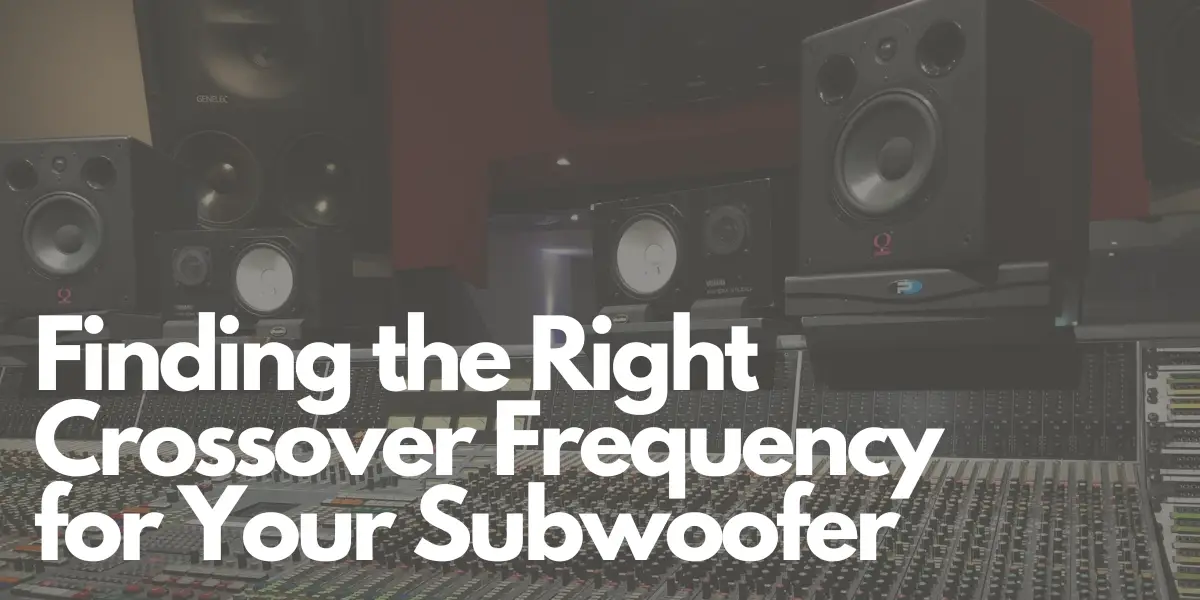A pivotal setting in your subwoofer system is the crossover frequency. It essentially demarcates where the subwoofer steps in, relieving the main speakers from producing the more strenuous low frequencies. Among the plethora of choices, 80Hz and 90Hz remain the frontrunners. But the question arises: which one should you opt for?
The Essence of the 80Hz Crossover
By choosing an 80Hz crossover, you’re tasking the subwoofer with managing all frequencies below this point, while frequencies above it are entrusted to the main speakers. This threshold is endorsed by THX and stands as a universal recommendation for a variety of setups.
There’s a trove of benefits for the 80Hz selection:
- It empowers the main speakers to hone in on midrange and treble frequencies, areas they excel in.
- It curbs the bass reflections that arise from walls and ceilings, enhancing overall sound clarity.
- The origin of the bass becomes elusive to the ear, which contributes to a surrounding sound aura.
However, everything isn’t rosy with the 80Hz crossover:
- The vigor of the bass may feel dampened, particularly in compact spaces.
- Smaller speakers might grapple with the lower frequencies, leading them towards distortion.
Delving into the 90Hz Crossover
With the 90Hz crossover setting, your subwoofer takes on frequencies below 90Hz, leaving the rest for the main speakers. This is an apt choice for systems bolstered by bigger main speakers and for acoustically sound rooms.
The 90Hz crossover comes with its share of pros:
- The subwoofer gets a wider frequency spectrum, amplifying the bass experience.
- Main speakers face reduced strain during high volumes.
- Bass origins become more identifiable, enhancing certain auditory experiences.
Conversely, the 90Hz choice has its drawbacks:
- Bass may resonate as overly deep or unclear, especially in confined spaces.
- Smaller speakers might falter in delivering midrange frequencies, upsetting the sound equilibrium.
- Bass sounds could become more direction-based, marring the immersion factor.
Making the Optimal Crossover Choice
No singular answer fits all when deciding between 80Hz and 90Hz. The prime setting banks heavily on several variables like your speaker size, room dimensions, acoustics, and individualistic auditory inclinations.
For those equipped with smaller speakers, 80Hz generally fares better. It safeguards against distortion while maintaining even bass distribution. On the flip side, for those with expansive speakers, 90Hz might do justice. But always ensure the bass doesn’t sound overextended or unclear.
The golden rule? Experimentation. Dabble with different settings, gauge the results, and make a choice. Supplementing this, always delve into the guidelines provided by your device manufacturers.
Bonus Crossover Tips
- If your subwoofer has an integrated crossover, refer to its manual for insight.
- Utilize the auto EQ function on your receiver or preamplifier to automate the crossover frequency setting.
- Seeking advice from a professional audio installer is always a viable route.
Remember, whether you swing towards 80Hz or 90Hz, the optimal crossover frequency melds with your system and personal preferences. Understand the merits and downsides of each to make a well-informed choice.
Author: Mike P
Hi! My name is Mike! I’ve been an apartment producer/musician for 10+ years. I’ve played in punk bands, released EDM tunes on Beatport and iTunes, and have a semi-successful stock music portfolio. Read more…



